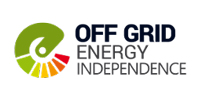
Vistra Corp’s Moss Landing Energy Storage Facility is connected to the power grid and began operating in December 2020. At 300 megawatts/1,200 megawatt-hours, the lithium-ion battery storage system, located on-site at Vistra’s Moss Landing Power Plant in Monterey County, California, will be the largest of its kind in the world. Furthermore, construction is already underway on Phase II, which will add an additional 100 MW/400 MWh to the facility by August 2021, bringing its total capacity to 400 MW/1,600 MWh.
“This is a keystone project and it is important in so many ways – it revitalizes an existing power plant site and utilizes active transmission lines, enhances grid stability, fills the reliability gap created by intermittent renewables, provides emission-free electricity, supports California’s sustainability goals and mandates, significantly benefits the local community, and ultimately provides affordable electricity to consumers,” said Curt Morgan, chief executive officer of Vistra. “A battery system of this size and scale has never been built before. As our country transitions to a clean energy future, batteries will play a pivotal role and the Vistra Moss Landing project will serve as the model for utility-scale battery storage for years to come.”
Housed inside the power plant’s completely refurbished former turbine building and spanning the length of nearly three football fields, Phase I of the battery system can power approximately 225,000 homes during peak electricity pricing periods. The system is made up of more than 4,500 stacked battery racks or cabinets, each containing 22 individual battery modules, which capture excess electricity from the grid, largely during high solar-output hours, and can release the power when energy demand is at its highest and solar electricity is declining, usually early morning and late afternoon. For further information see the IDTechEx report on Batteries for Stationary Energy Storage 2021-2031.





